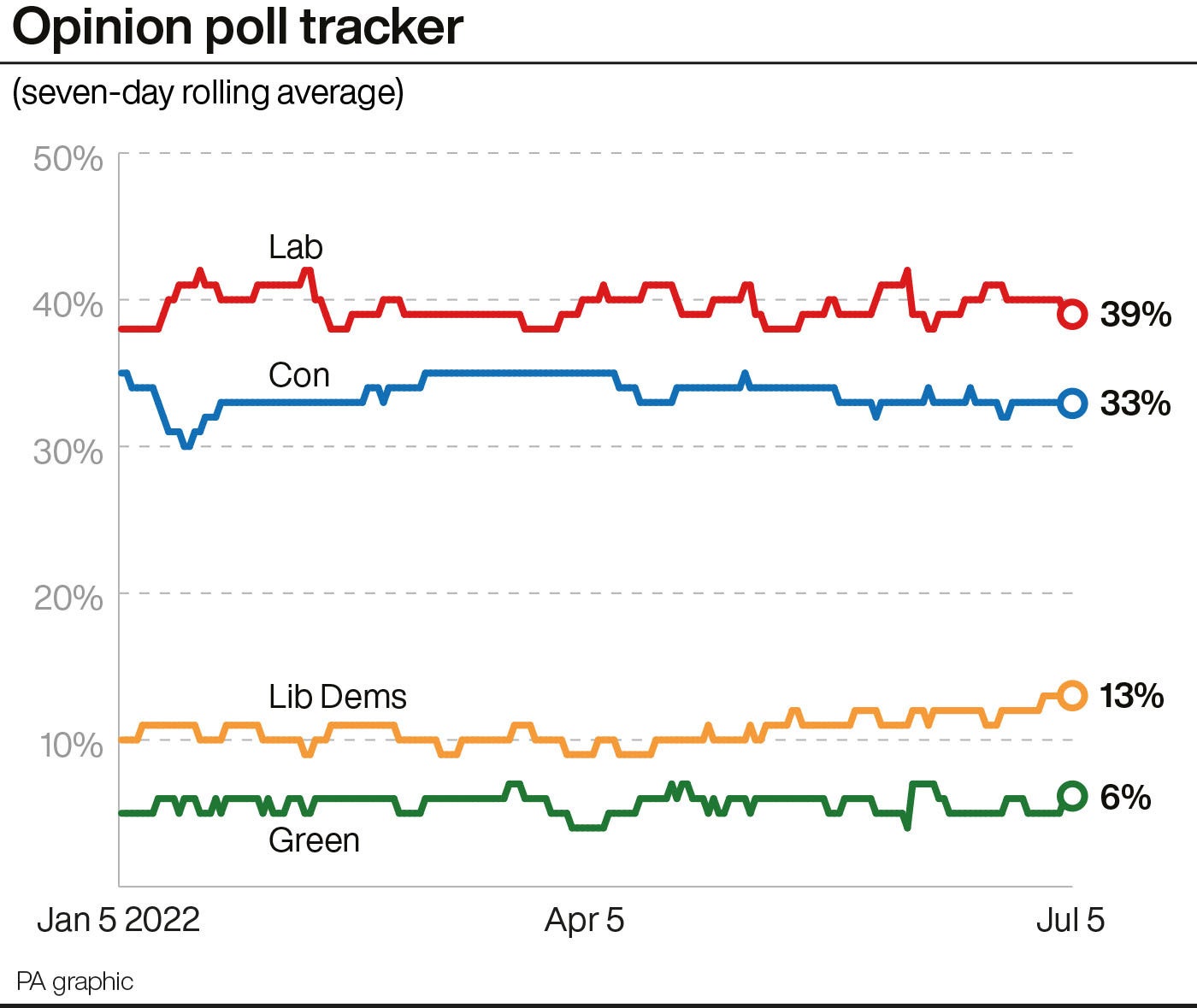
Labour has enjoyed a small but consistent lead over the Conservatives in the opinion polls for the past seven months.
The size of the lead has varied, from an average of just three points to as many as 11 points.
Sir Keir Starmer’s party first moved ahead in the polls in early December 2021, around the time stories first began to emerge of Downing Street parties during Covid-19 lockdowns.
Before this point, Labour had spent much of the previous few years trailing well behind the Government.
Based on a seven-day rolling average of all national published polls, Labour’s vote share stood at 39% on July 5, ahead of the Conservatives on 33%, with the Liberal Democrats on 13% and the Greens on 6%.

A year ago, the Conservatives were averaging 41%, Labour 33%, the Lib Dems 9% and the Greens 5%.
Opinion polls are snapshots of the prevailing public mood, not projections or forecasts.
With the next general election still more than two years away – the latest possible date is January 23 2025 – there is plenty of time for the national numbers to change.
But polls both shape and reflect the prevailing mood of the country, in turn affecting morale among politicians and party members alike.
The news for the Conservatives is equally grim when looking at Boris Johnson’s popularity scores.
The Prime Minister’s net favourability rating – the difference between the proportion of people saying they have a favourable opinion of him and those who have an unfavourable opinion – has been at or near an all-time low since January.
It currently stands at minus 51 points, according to figures compiled by the polling group YouGov.
Boris Johnson has had negative favourability ratings for almost his entire premiership, save for a few weeks in spring 2020 at the start of the Covid-19 pandemic.
It is only in recent months that the score has sunk below minus 40, however.







